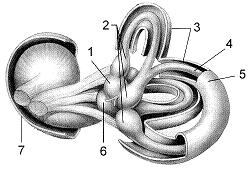Why is the traditionally defined taxon Reptilia paraphyletic?
What will be an ideal response?
Birds share a common ancestor with reptiles, but birds are placed in a separate taxon. Bird innovations,
in a traditional sense represent such extreme divergence from ancestral morphology that they merit
recognition as a separate class.
You might also like to view...
Which of the following are typically used as vectors?
a. plasmids b. viruses c. insulins d. both plasmids and viruses
Which organism is most likely to have a type III survivorship curve?
A. an oak tree B. a domestic dog C. corn in a farmer's field D. Paramecium Clarify question: What is the key concept addressed by the question? What type of thinking is required? Gather Content: What do you already know about the characteristics of a type III survivorship curve? What other information is related to the question? Choose Answer: Given what you now know, what information is most likely to produce the correct answer? Reflection on Process: Did your problem-solving process lead you to the correct answer? If not, where did the process break down or lead you astray? How can you revise your approach to produce a more desirable result?
The structures responsible for detecting linear movement relative to the pull of gravity are labeled __________ in Figure 43-2

a. 1 and 3
b. 4 and 6
c. 3 and 5
d. 1 and 6
e. 4 and 7
Swine are vulnerable to infection by bird flu virus and human flu virus, which can both be present in an individual pig at the same time. When this occurs, it is possible for genes from bird flu virus and human flu virus to be combined
If the human flu virus contributes a gene for Tamiflu resistance (Tamiflu is an antiviral drug) to the new virus, and if the new virus is introduced to an environment lacking Tamiflu, then what is most likely to occur? A) The new virus will maintain its Tamiflu-resistance gene, in case of future exposure to Tamiflu. B) The Tamiflu-resistance gene will undergo mutations that convert it into a gene that has a useful function in this environment. C) If the Tamiflu-resistance gene involves a cost, it will experience directional selection leading to reduction in its frequency. D) If the Tamiflu-resistance gene confers no benefit in the current environment, and has no cost, the virus will increase in frequency.